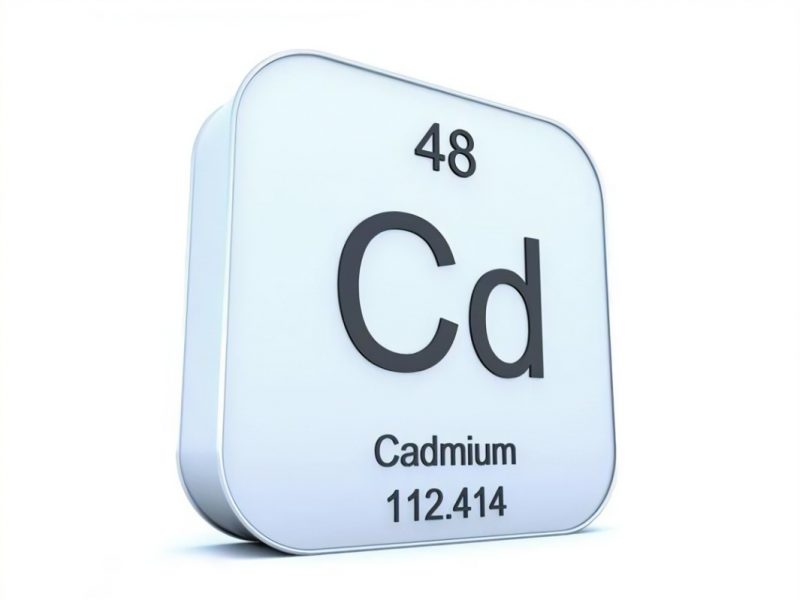
The first report of metal element carcinogenesis was the case report of arsenic carcinogenesis in 1888. For more than one hundred years, some metal elements have been confirmed to cause cancer in the human body. This phenomenon has attracted great attention from the medical community. The following mainly introduces the situation of 5 kinds of carcinogenic metals.
Arsenic
Arsenic is the first element to be confirmed to have carcinogenic effects on humans. In the late 1980s, reports confirmed that arsenic can cause skin cancer and lung cancer. Some people believe that arsenic is the initiator of cancer, and even more so. The elderly are more sensitive to the carcinogenicity of arsenic than the young, and the latent period of the former after exposure to arsenic is shorter. When arsenic dust particles are exposed to high levels, their carcinogenic ability decreases, and vice versa, their carcinogenic ability increases sharply. This is because when the exposure of arsenic dust particles is high, the effect of tracheal and bronchial mucociliary movement is enhanced, which can eliminate arsenic dust particles, so that the tissues that are prone to cancer are better protected; on the contrary, when the low dose of dust has not yet triggered the elimination of cilia When it works, the actual intake will be more in such an environment for a long time, and the carcinogenic effect will be stronger. Therefore, when determining carcinogenic effects, the exposure period is more important than the exposure intensity.
Chromium
As early as 1890, it was recognized that chromium compounds would cause cancer. In the late 1940s, scholars from various countries successively carried out many studies and reports. The most clear basis came from the chromate production and the manufacturing and application industries of chromate pigments. The United States has reported a 30-fold increase in lung cancer mortality among chromate-producing workers, and the incidence of lung cancer among German pigment manufacturing workers is also very high. Animal experiments have found that calcium chromate, zinc chromate, strontium chromate and lead chromate can all induce cancer and cause cancer. Chromium is the only convincing metal with hereditary properties. Its properties depend on the oxidation state and solubility. Only chromate with low solubility is carcinogenic.
Nickel
In 1932, lung cancer and nasopharyngeal cancer were found among nickel smelters in England and Wales. Early scholars believed that the carcinogenic nickel compound was mainly carbon-based nickel, but most scholars recently believed that nickel-containing dust was the main carcinogen. Soluble nickel compounds are small in particles and present in aerosol form, which can easily reach the lungs, leading to lung cancer. Insoluble nickel compounds are dusty, large in size, and easy to stay in the nasal cavity. In addition to lung cancer, they can also cause nasopharyngeal cancer. When the two are present at the same time, they have a combined effect, and the risk of carcinogenesis will be greatly enhanced.
Beryllium
Epidemiological reports of beryllium’s carcinogenic effects on humans began to appear in the early 1980s, which aroused widespread concern among scholars. In 7 beryllium factories in the United States, the death rate of lung cancer among 9,000 workers has increased significantly. Follow-up observation also found that lung cancer deaths increased significantly, especially among workers who had suffered from acute beryllium pneumonia. Animal experiments have confirmed that repeated perfusion of metal beryllium, beryllium oxide, and beryllium hydroxide into the trachea of rats and monkeys can induce lung cancer.
Cadmium
In 1965, it was first reported in the United Kingdom that many workers in nickel-cadmium battery factories had prostate cancer. A series of subsequent studies showed that workers exposed to cadmium had an increased risk of lung cancer. In 1985, a large-scale survey of workers in 17 cadmium production plants in the United Kingdom showed that the death rate of lung cancer among workers increased, and it showed a trend of increasing with the increase of working time and contact intensity. Animal experiments have also confirmed that cadmium dust or cadmium compounds are a factor in inducing lung cancer.
